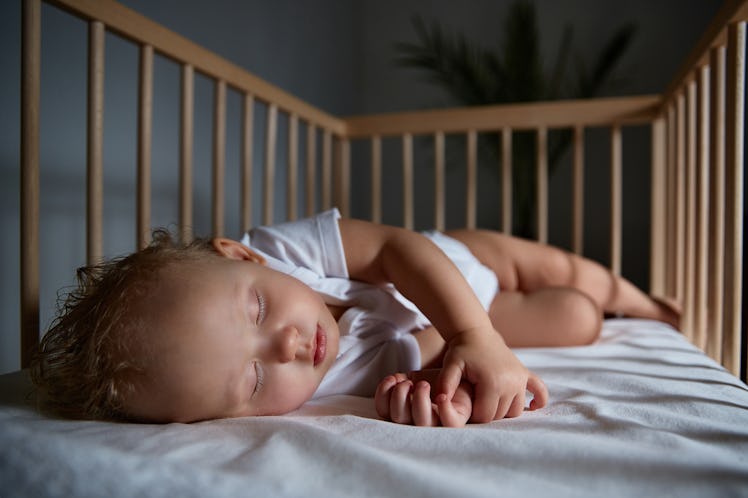What Is ‘No Cry’ Sleep Training? A Sleep Psychologist Explains
Want to sleep train but can't stand the endless wails of your baby? No cry sleeping training is one answer. Here's how it works.

No-cry sleep training is an increasingly popular approach among parents who are horrified by the more popular “cry it out” method, popularized in Dr. Richard Ferber’s 1985 book, Solve Your Child’s Sleep Problems. Ferber’s sleep training method is pretty hard to swallow for many new parents. Letting your child cry it out, after all, is a loud and torturous process (for the parents), and one that leads to most parents searching for another, gentler method. The no-cry sleep training solution is, on the surface, just that. But the gap between it and the cry-it-out method is actually not as wide as you might expect.
The truth, according to clinical sleep psychologist Lynelle Schneeberg, Psy.D., of Yale School of Medicine, is that no-cry sleep training doesn’t differ all that much from cry-it-out — it simply takes a more gradual approach. This is why she prefers to call no-cry sleep solution methods “fewer tears” sleep training.
The premise behind no-cry sleep training is that tears aren’t the only way to turn a baby into a self-soother. Like “cry it out,” no-cry sleep training advocates recommend creating a cozy and comforting bedtime routine and sticking to it. From there, the no-cry sleep solution steps branch off into hundreds of different techniques, each with its own book and set of faithful supporters.
For example, registered nurse Tracy Hogg, in Secrets of the Baby Whisperer, recommends going in when your baby cries, picking them up for a quick reassurance, and then placing them back in the crib and leaving the room. Repeat as many times as necessary. “There are so many ways to do sleep training,” says Schneeberg. “It ultimately depends on parental preference, and it depends on the parent’s interpretation of the temperament of the child.”
The Ferber method does not inevitably cause crying, either. Tears happen when a child who is dependent on external soothing — rocking, lullabies, comfort-feeding, cuddling, bouncing, or any of the other theatrics parents perform crib side — goes through the transition of becoming a child capable of falling asleep and staying asleep on their own.
“You’re used to falling asleep with a pillow. What if the next time you woke, it was gone? You’d wonder, where the heck’s my pillow? And you’d try to find it so you could go back to sleep,” Schneeberg says. The same is true for an infant who is used to being rocked to sleep and wakes up to find mom or dad gone.
Every sleep training method — no-cry sleep training, cry-it-out, and everything in between — works within this space of helping babies “find their pillows.” The end goal is always the same: to teach baby to be an independent sleeper, capable of falling asleep without parental assistance. Each variation of each sleep training method has its pros and cons, and none of them can promise your baby will never cry. Teaching babies to self-soothe their way back to sleep is hard and rarely quick, but when it’s (finally) successful, everyone’s happier.
This article was originally published on